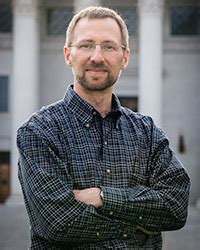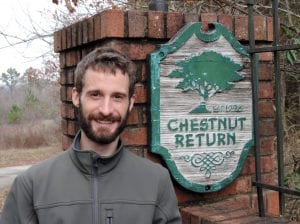Saturday, March 21st
(8:30 a.m. to 2:30 p.m.)
Harrisburg, PA
You are invited to join the PA/NJ Chapter of The American Chestnut Foundation for our 2020 Spring Growers Meeting. Come to learn and to socialize with chestnut growers and enthusiasts. There will be a brief introduction by our President, followed by educational presentations and lunch. At the end of the meeting, pure American seed nuts will be distributed. This meeting is free and open to the public but we do require folks to RSVP and to pay for their own lunch, at the door. Download a flyer to share.
Venue: Penn State Harrisburg in the Education Activities Building (EAB) North, located on College Avenue. Google Map (40.202465, -76.743470)
Parking in the south parking lot next to EAB South – just off College Ave.
Featured Speakers:

Marc McDill, Associate Professor of Forest Management, Penn State University
Climate Change and Pennsylvania’s Forests
This talk reviews how Pennsylvania’s climate is changing and how it is projected to change in the future. It discusses how Pennsylvanians in general, and Pennsylvania’s forests in particular, are likely to be affected in the coming decades. Finally, it discusses the role forests can play in mitigating climate change and how we can help Pennsylvania’s forests increase their ability to adapt to the changing climate.

Jason Delborne, Associate Professor of Science, Policy, and Society, Department of Forestry and Environmental Resources, North Carolina State University
Forest Health and Biotechnology: Possibilities and Considerations
The American chestnut, whitebark pine, and several species of ash in the eastern United States are just a few of the North American tree species that have been functionally lost or are in jeopardy of being lost due to outbreaks of pathogens and insect pests. Biotechnology has the potential to help mitigate threats to North American forests from insects and pathogens through the introduction of pest-resistant traits to forest trees. However, challenges remain: the genetic mechanisms that underlie trees’ resistance to pests are poorly understood, the complexity of tree genomes makes incorporating genetic changes a slow and difficult task, and there is a lack of information on the effects of releasing new genotypes into the environment. The report recommends research and investment to improve the utility of biotechnology as a forest health tool. It is available for a free download at www.nap.edu.
Dr. Delborne served on this committee as a social scientist who focuses on public and stakeholder engagement about emerging biotechnologies. He has also conducted research funded by the National Science Foundation on the specific case of the genetically engineered American chestnut tree. In this presentation, he will review the major findings of the NASEM report and provide a summary of his research on the social, political, and ethical aspects of the GE American chestnut tree.

Jared Westbrook, Director of Science The American Chestnut Foundation
The Evolving Effort to Restore the American chestnut
For 30 years, The American Chestnut Foundation has pursued backcross breeding to generate hybrids that have the blight resistance of the Chinese chestnut and the timber-type form of the American chestnut. The backcross strategy is based on the hypothesis that blight resistance is conferred by a few genes. Recent genomics research has revealed that resistance is controlled by many genes. As a consequence, blight resistance is has been partially diluted through backcrossing. Based on these results, TACF is advancing additional backcross lines through fewer backcross generations to balance blight resistance with American chestnut characteristics. Pending U.S. regulatory approval, we also plan to breed transgenic blight-tolerant American chestnut trees to wild American chestnuts over three to five generations to diversify the transgenic population for restoration. Third, we are pursuing genomics research to identify genes that underlie blight resistance in Chinese chestnut with the intent of introducing or modifying corresponding genes in American chestnut with CRISPR technology. With these approaches, pursued independently and in combination, we remain hopeful about the prospects of creating a genetically diverse, blight-resistant population of American chestnut for restoration in eastern forests.
